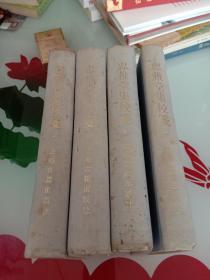
Accelerated C++
¥ 88 九品
仅1件
江苏徐州
认证卖家担保交易快速发货售后保障
作者[美]Andrew Koenig;Barbara E.Moo
出版社机械工业出版社
出版时间2006-04
版次1
装帧平装
货号140
上书时间2023-10-30
- 店主推荐
- 最新上架
商品详情
- 品相描述:九品
图书标准信息
- 作者 [美]Andrew Koenig;Barbara E.Moo
- 出版社 机械工业出版社
- 出版时间 2006-04
- 版次 1
- ISBN 9787111188315
- 定价 42.00元
- 装帧 平装
- 开本 其他
- 纸张 胶版纸
- 页数 336页
- 【内容简介】
-
本书的第一部分分为前七章,专注于使用标准抽象进行编程。第二部分从第8章开始,讨论如何定义你自己的抽象。
*介绍库是一个非同寻常的注意,但我们认为这是正确的。C++语言的许多部分——尤其是那些较困难的部分——主要出库作者利益的考虑面存在的。库的用户根本需了解语言的那些部分。因此在第一部分中我们避开语言的这此特性不谈,与使用转传统的方式相比,我们撤离式使得更快地编写出有意义的C++程序成为可能。
本书的许多部分引用到其他部分。这种引用看上去像“§39.4.3/857”的模样,它指的是引用的文本位于第857页,并且是第39.4.3小结的一部分。
本书的每一章都以一个称为“Details“的小节收尾。安排这一切有两个用意:它们可以命名你加深对该章介绍的概念的记忆,并且它们还包含一些额外的相关信息。
作者简介:
凯尼格:AT&T大规模程序研发部成员。他从1986年开始从事C语言的研究,1977年加入贝尔实验室。在1989年ISO/ANSIC++委员会成立时,他就加入了该委员会,并一直担任项目编辑。他还是《Ruminations on C++》(C++沉思录)、《C Traps and Pitfalls》的作者。 - 【目录】
-
Preface
Chapter 0 Getting started
0.1 Comments
0.2 #include
0.3 The main function
0.4 Curly braces
0.5 Using the standard library for output
0.6 The return statement
0.7 A slightly deeper look
0.8 Details
Chapter I Working with strings
1.1 Input
1.2 Framing a name
1.3 Details
Chapter 2 Looping and counting
2.1 The problem
2.2 Overall structure
2.3 Writing an unknown number of rows
2.4 Writing a row
2.5 The complete framing program
2.6 Counting
2.7 Details
Chapter 3 Working with batches of data
3.1 Computing student grades
3.2 Using medians instead of averages
3.3 Details
Chapter 4 Organizing programs and data
4.1 Organizing computations
4.2 Organizing data
4.3 Putting it all together
4.4 Partitioning the grading program
4.5 The revised grading program
4.6 Details
Chapter 5 Using sequential containers and analyzing strings
5.1 Separating students into categories
5.2 Iterators
5.3 Using iterators instead of indices
5.4 Rethinking our data structure for better performaan
5.5 The list type
5.6 Taking strings apart
5.7 Testing our split function
5.8 Putting strings together
5.9 Details
Chapter 6 Using library algorithms
6.1 Analyzing strings
6.2 Comparing grading schemes
6.3 Classifying students, revisited
6.4 Algorithms, containers, and iterators
6.5 Details
Chapter 7 Using associative containers
7.1 Containers that support efficient look-up
7.2 Counting words
7.3 Generating a cross-reference table
7.4 Generating sentences
7.5 A note on performance
7.6 Details
Chapter 8 Writing generic functions
8.1 What is a generic function?
8.2 Data-structure independence
8.3 Input and output iterators
8.4 Using iterators for flexibility
8.5 Details
Chapter 9 Defining new types
……
Chapter 10 Managing memory and low-level data structure
Chapter 11 Defining abstract data types
Chapter 12 Making class objects act like values
Chapter 13 Using inheritance and dynamic binding
Chapter 14 Managin8 memory (almost) automatically
Chapter 15 Revisitin$ character pictures
Chapter 16 Where do we go from here?
Appendix A Language details
Appendix B Library summary
Index
点击展开
点击收起
— 没有更多了 —

















以下为对购买帮助不大的评价